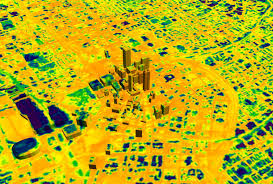Relative Humidity (RH) is the ratio of partial water pressure to saturated water vapor pressure at a certain temperature. The magnitude of RH is widely used in various fields, including agriculture, meteorology, sterilization, incubators, textile products, air purifiers (AC) and gas purification. Although the cost of optical fiber humidity sensors is higher than conventional electronic sensors, these sensors have advantages because of their small size, possible multiplexing information from several sensors and not sensitive to electronic magnetic fields. RH sensors on the market such as wet and dry psychrometers are poor because of their low sensitivity and long response time and have the detrimental effect of electromagnetic wave interference.
An optimization method of the proposed humidity sensing scheme comprises of silica microfiber laid on a glass surface coated with Zinc Oxide (ZnO) nanorods is reported. The silica microfibers were tapered into several waist diameters of 6 µm, 8 µm, 10 µm and 12 µm using flame brushing technique, while the glass surface was coated with ZnO nanorods using hydrothermal method for 6 h, 9 h, 12 h, 15 h and 18 h of growth time. The samples were exposed to the different humidity level ranging from 35%RH to 85%RH to observe several performance parameters such as scattering coefficient (α), sensing performance factor , output light intensity and ultimately the sensitivity.
12-h growth sample exhibited the optimum results in term of α,, output light intensity and sensitivity towards the %RH level. The sensitivity improved by a factor of 1.3 as compared to the closest best sample. Besides that, it was found that 6 µm waist diameter microfiber sample produced optimum result in term α, and sensitivity towards the %RH level. The sensitivity improved by a factor of 1.1 as compared to the closest best sample. The work provided the best optimization method for microfiber and ZnO nanorods samples for the proposed humidity sensing scheme. It utilized the distinctive features of the scattering and surface absorption capability of the microfiber and ZnO nanomaterials coated glass surface to couple with the surrounding water molecules for humidity sensing.
Author: Moh Yasin
Related article: https://www.sciencedirect.com/science/article/pii/S1068520019303049





